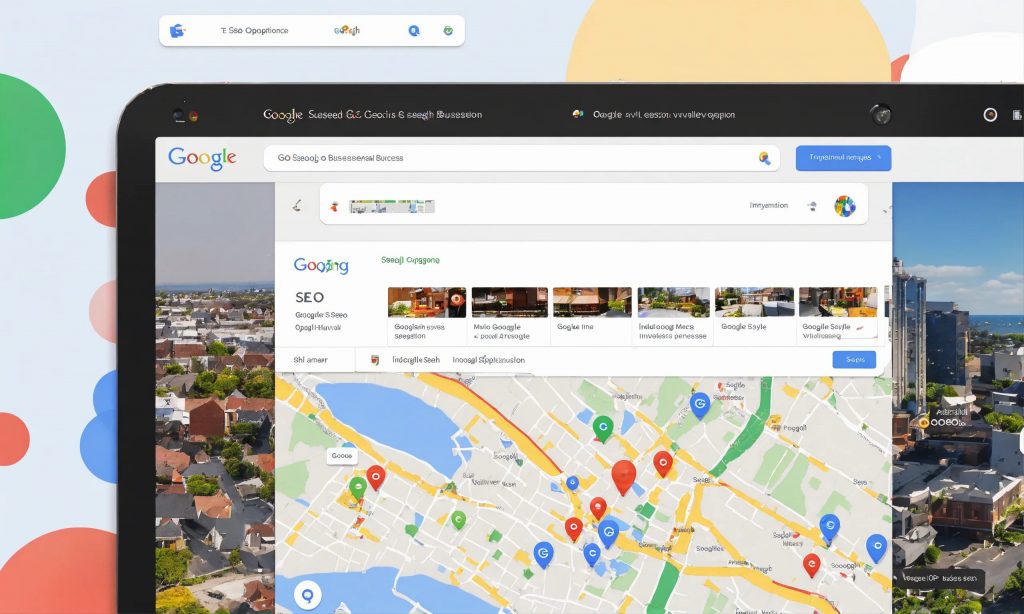If you’re in charge of search engine optimization (SEO) at your firm, it’s natural to break out in a cold sweat while reviewing your SEO analytics.
SEO is an important tool for bringing organic traffic to your website, but it’s not always easy to tell what’s working and what isn’t.
Take a big breath before you start worrying about your SEO approach. There are many different types of SEO for different objectives, and if you get them all operating smoothly, you can start generating more traffic while building your influence online.
In this post, we’ll look at the six main types of SEO that every marketer should be aware of and help you determine which ones are genuinely important for success. Spoiler alert: Having an excellent on-page SEO strategy is critical, but we’re getting ahead of ourselves. Continue reading for an in-depth review of SEO methods and how to make the most of them for your brand.
Why are there multiple types of SEO?
Before we go into the different types of SEO, let’s take a deeper look at why they exist.
There was a time when SEO meant jamming keywords into material, a “more is better” method that worked—until it didn’t.
Your page must be valuable to Google to rank highly if it has a lot of keywords on it. It was the Wild West of SEO rankings, and marketers seized the opportunity, even burying paragraphs of text in the page’s background that were invisible to the normal reader but visible to Google’s crawlers. Marketers sought to boost their content higher in search engine results pages (SERPs) by stuffing keywords into titles and meta tags.
Keyword stuffing did not become less effective as an SEO approach until 2003, when the first significant Google algorithm upgrade was released. Subsequent improvements placed less emphasis on keyword stuffing and more emphasis on quality material that best suited searchers’ queries.
Quality content that is helpful, dependable, and people-centric is still a high ranking criteria today. Simply said, if your material does not give unique, well-researched information that completely answers a search topic, it will not appear at the top of search results.
Types of SEO that can help you rank
Multiple types of SEO have developed over the years to handle algorithmic intricacies, searcher habits, and the growth of mobile search. You’ll be well-equipped to design a thorough SEO plan and climb higher in search results if you use the six types of SEO listed below.
1. On-Page SEO

On-page SEO, also known as on-site SEO, is the process of optimizing web pages so that they rank higher in search engines. On-page SEO performance is dependent on optimizing your page’s content, title tags, internal links, and other aspects.
Google considers these characteristics when determining if your page fits a user’s search intent. It will rank your page higher in search results if it believes it is relevant and beneficial to a visitor. Otherwise, your page may be moved down in search rankings, where people may not see it.
On-page SEO Elements
- Keyword optimization: Conduct keyword research and carefully place important keywords that you want to rank for into your content. Tools such as Google Keyword Planner, Moz, and Semrush may assist you in determining the optimal keywords for your business that will allow you to rank without being extremely competitive.
- Title tags and meta descriptions: Title tags display the page title in search results, while meta descriptions appear below the page title. Whereas title tags determine whether someone clicks through, meta descriptions do not directly effect rankings but can help a user decide whether to visit the website. Your target keyword should appear in both the title and the meta description.
- Image optimization: Include images into your content to boost your ranks in Google images, which account for 22.6% of all searches. Create descriptive alternate (alt) text that includes your keyword.
- URL structure: Make short, descriptive URLs that tell Google what your page is about.
- Internal linking: To boost navigation and SEO, connect to relevant pages within your website.
2. Off-page SEO
Off-page SEO focuses on activities that occur outside of your website and have an influence on your search engine rankings. This sort of SEO is all about increasing the authority and reliability of your website in the eyes of search engines.
Off-page SEO elements
- Backlinking: often known as link building, is obtaining high-quality connections to your pages from reliable websites. The more backlinks you have from distinct websites, the more authority you get as a respectable site with search engines.
- Social signals: More brand attention and, consequently, more searches and mentions of your brand might result from social media users linking to your website.
- Brand mentions: Just like social signals, brand mentions on social media, reviews, podcasts, videos, and other places lead to increased brand attention and searches.
- Guest blogging: By contributing high-quality material to other websites, you may obtain visibility and backlinks to a larger audience, which can lead to mentions and searches. According to one study, guest posting is one of the most successful off-page SEO methods.
3. Technical SEO

Technical SEO covers optimizing your site’s performance, structured data, and other technical components of your pages. Because it ensures that web crawlers can access and index your site, technical SEO has an impact on search engine visibility. It also helps to a positive user experience when visitors visit your site. In essence, if your technical SEO is lacking, your site will not be indexed and will not display in SERPs, even if you have high-quality content.
Technical SEO elements
- Site speed: Optimize your website for speedier loading times, which affect results on mobile and desktop platforms alike. Use Google’s PageSpeed Insights tool to test your site’s speed; the higher your number between 0 and 100, the quicker your site is.
- Mobile optimization: Ensure that your site appears properly on mobile devices, as Google employs mobile-first indexing, which means that it indexes and ranks mobile versions of sites.
- XML sitemaps: A sitemap is an XML file that contains a list of your website’s pages. To ensure that Google can discover your web pages, create and submit a sitemap.
- Structured data (schema): Structured data is when you use markup code to help Google understand the content of your website. You can also get rich snippets, which reveal more information about your website in search results beneath the title and meta description, which increases click-through rates.
- Robots.txt: A robots.txt file is a single text file that notifies search engines which pages to crawl. A robots.txt file, as opposed to a meta robots tag, applies to the whole site.
- Canonical tags: If you have pages on your site that contain identical content, Google may not know which pages to index and show in search results. Canonical tags (rel=”canonical”) address this problem by designating a link as the original version to be indexed and prioritized.
4. Local SEO

Local SEO is enhancing a local business’s website in order to boost local traffic and exposure. Local SEO methods may assist any firm that has a physical location or services a specific geographic region. Local SEO is especially crucial given the surge of Google Maps “near me” queries, which have increased by more than 100% year over year internationally.
Local SEO Key Elements
- Google Business Profile optimization: Take control of and enhance your Google Business listing. Include information such as your address, phone number, website, and location images. You may also use your Google Business Profile as a social media profile, regularly updating it with photographs, blog entries, and other relevant materials.
- Local citations: Make certain that your company’s information is consistent throughout web directories. A listing management tool can assist you in swiftly updating your information wherever your firm appears online.
- Reviews and ratings: Encourage your customers to submit reviews on Google, Yelp, and other review platforms, and respond to their comments.
- Local keyword optimization: Use position tracking to detect relevant local keywords that fluctuate over time and optimize your pages for those keywords.
5. Voice search SEO
When you consider the increase of voice search in recent years, it’s easy to see why voice search optimization is such an important sort of SEO. Voice searches account for 20% of Google searches as people increasingly utilize smartphones and other voice-activated devices to get the information, companies, and products they want.
Voice search optimization allows digital assistants such as Apple’s Siri, Amazon’s Alexa, and Google Assistant to answer conversational and long-tail inquiries in the same way as an assistant would answer a question. For example, someone looking for a pasta recipe may ask Siri, “Hey Siri, how do I make pasta?” and Siri would read the results aloud in an attempt to answer the question.
How to Optimize Your Website for Voice Search
- Investigate and target keywords for voice search. Focus on long-tail keywords, conversational keywords that seem natural, and question keywords like “how do I…” and “what is…” You may use a keyword tool again, or try putting conversation terms and inquiries into Google to see what autocomplete ideas come up.
- Examine the search results for your desired keywords. Examine what’s already showing up on SERPs, paying special attention to SERP characteristics such as rich snippets, “people also ask” inquiries, and the local pack for any location-specific keywords.
- Examine your website’s content. Examine current sites for chances to optimize for voice search, such as blog entries that answer queries you want to target with voice search.
- Enhance technical SEO. Voice search optimization relies heavily on page speed, mobile friendliness, and responsive design.
- Optimize for local SEO. Implement the local SEO methods outlined in #4 if you want to attract local companies.
- Keep track of your progress. Voice search keywords, like local SEO keywords, can vary over time, so keep track of your results and make revisions as needed.
6. Mobile SEO
You optimize your website for mobile searches made from smartphones and other mobile devices using mobile SEO. With mobile devices making up 55% of website traffic, mobile SEO is a must-have for any business looking to increase traffic. To attract local clients looking for companies like yours, local businesses, in particular, must optimize for local search.
Mobile SEO Elements
- Responsive design: A responsive design modifies the layout and content of your website to present the same page to mobile and desktop viewers. The information is rendered differently depending on screen size, delivering a consistent user experience across devices.
- Page speed: Page speed, like other types of SEO, is a ranking element that affects the user experience. It is excellent if your site loads in less than one second.
- Mobile-friendly content: Short sentences and paragraphs make your information easier to read and skim on mobile devices. Furthermore, a catchy introduction helps to attract readers’ attention and keep them on your website, so get to the point swiftly in the first paragraph of material.
- White space. Maintain some white space between text blocks, photos, margins, and other parts of your pages to increase readability.
- There are no annoying popups. When an invasive popup displays on the website and covers the core content as soon as the page loads, your readers—and Google — don’t like it. A tiny popup asking visitors to accept cookies or verify their ages is appropriate; however, the popup should not take up too much real estate.
- Structured data: To arrange content in a way that search engines can comprehend, use schema markup.
- Voice optimization. To optimize voice search results on mobile devices, use conversational and long-tail keywords.
Which method of SEO is the most effective?
If you want to make an effect on SERPs, you won’t want to skip any of the methods of SEO mentioned above. However, one type should be at the top of your list when you investigate SEO strategies: outstanding content with exceptional on-page SEO.
No matter how skillfully you generate backlinks, optimize your site technically, or include local and voice search, high-quality content is essential for SEO success. Relevant to users’ search queries, interesting, well-researched, and engaging content not only draws visitors but also keeps them returning for more.
Quality content is the key ingredient for SEO success when paired with on-page SEO, which ensures your material is easily discoverable by search engines. While each sort of SEO has a place in your digital marketing plan, the most important type of SEO focuses on providing quality content to your audience while optimizing it for search engines.
Suggestions for Improving Content Quality
Put your content strategy and on-page SEO first, and you’ll see your website rise higher in search results. Follow these guidelines to create high-quality content:
- Give something of worth. Create content that meets the needs, desires, and pain points of your target audience. Concentrate on delivering value by displaying relevant information that customers want to view.
- Make sure your keywords are correct. Conduct keyword research to uncover the terms and phrases your audience is looking for, and then organically include these keywords into your content.
- Be unique. Give your readers a new viewpoint or thoughts on themes that are important to them. Stuff that is original and well-researched will fare better than stuff that lacks substance.
- Make a structure that is SEO-friendly. Use headers, subheadings, and bullet points to organize your information. At least some of your headers and subheaders should include keywords.
- Be clear and succinct. Avoid jargon, lengthy phrases, and large content blocks. Use images and separate parts to break up the content.
- Grammar, spelling, and style should all be proofread. Typos, awkward working, or bad language and punctuation all detract from otherwise excellent information.
- Provide a link to a reliable source. Link to research, data, and other pieces that support the facts you’re presenting in your writing. Include the person’s name, title, and any pertinent connections if you conduct an interview.
- You should repurpose your material. It’s simple to recycle high-quality material on social media, videos, and other platforms, which may help you expand your audience.
- Maintain consistency. Maintain a publication schedule so that readers know when to anticipate new information from you.
- Add calls to action. Inform readers of the next action, such as arranging a call, a demo, making a reservation, or getting a quote.
- Make it accessible. Include alternative language for individuals who need assistive technology to ensure that everyone has access to your material.
- Track performance. Using analytics tools, track how your material performs and alter your strategy as needed to increase outcomes.
SEO Tools that Assist You in Ranking
To increase my traffic, I use a variety of SEO and content marketing strategies. SEO is responsible for the majority of our website traffic, and we’ve tried every tool to discover the one that works best for us.
Here are our current preferred SEO tools:
- Ahrefs: Used for competitive research and keyword research.
- Google Autocomplete: For keyword suggestions
- Clearscope: For content creation and optimization
- Surfer: For artificial intelligence-generated material (not utilized on this website).
- Webflow: For hosting websites and altering technical SEO settings.
SEO is a long-term effort.
Whatever sort of SEO you choose, bear in mind that it is a race, not a sprint. It might take months of persistent effort to see the outcomes of SEO efforts, so don’t abandon a method too quickly, even if you’re making modest tweaks along the way.
Why is SEO such a lengthy process?
- It takes time to create brand authority through white-hat SEO techniques that include excellent content and backlinks that signal to search engines that your site is trustworthy.
- When using many sorts of SEO, you’ll need to fine-tune the various tactics you’re using.
- Black hat SEO tactics such as keyword stuffing, PBNs, and cloaking, no matter how enticing they appear, will not get you very far. If you don’t want to get punished in SERPs, you can’t rush the process.
- SEO is a never-ending process. Competition, algorithms, and shifting search patterns are just a few of the ever-changing SEO issues. You cannot “set it and forget it” when it comes to SEO. So just include it in your regular budget.
Keep in mind that creating high-quality content is a continual process. Continuously try to develop and adjust your content strategy to fit your audience’s shifting demands and interests. Remember that when it comes to keyword optimization, sometimes less is more.

